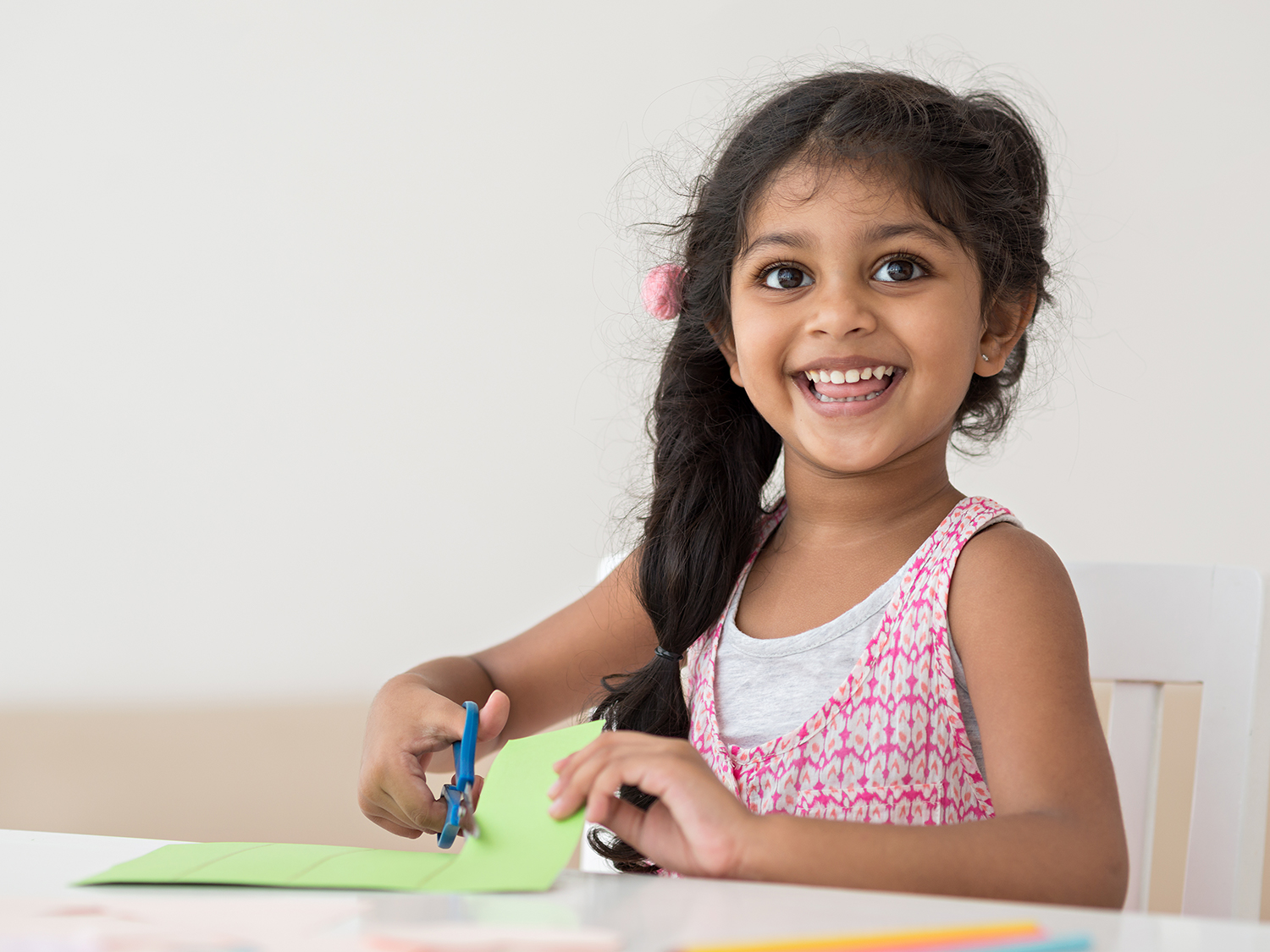Whether you focus on one or explore them all, these seven tips will help your incoming kindergartener prepare for this important milestone and set the stage for a successful year.
Encourage your child to recognize and write the letters in their name. This is a wonderful primer for learning the ABCs and helps build a foundation for letter recognition.
For practice, the Scholastic Early Learners: Write and Wipe Learn to Write is a great tool: After your child traces the letters, wipe the book clean to start again!
Establishing a weekday reading routine is a wonderful way to foster a love of books and create special bonding moments.
Whether it’s a couple of pages before bed or a few minutes after dinner, reading together helps build lifelong reading habits. According to the Scholastic Kids and Family Report, 92 percent of parents value reading aloud as a special time with their child.
If your child has been going to bed a little later during summer, help them transition smoothly by adjusting bedtime routines to 15 minutes earlier in the days leading up to school.
Make learning shapes and colors fun by turning it into a game! This can be done through everyday activities like sorting laundry, identifying shapes in street signs, or picking out colors around you.
Plus, the engaging search and find I SPY books are a great way to tune into shapes and colors at home or on the go!
Encouraging kids to spot different shapes and colors in daily routines helps make learning feel like an adventure and encourages children to explore and observe the world around them.
Kids get a dual lesson with Flash Cards: Colors & Shapes, which features colorful, double-sided activity cards.
Incorporate counting with objects found in your home, such as tallying the number of apples in a bowl or counting steps while walking up the stairs.
Use opportunities like tidying up toys to introduce concepts like “more” and “less”, to help kids grasp early math concepts. For additional support, you might ask, "Who has more blocks?" or "How many stuffed animals do we need to put away?"
There are plenty of counting books that teach the basics, but Scholastic Early Learners: Kindergarten Extra Big Skills Workbook: Math Practice has enough activities — and delightful illustrations — to keep kids learning through to graduation.
Following directions is a key comprehension skill, which your child can build at their own pace with the Scholastic Early Learners Pre-K Activity Pack of workbooks.
To make learning fun, incorporate games like Simon Says or Red Light, Green Light, which encourage your child to follow multi-step directions and develop self-regulation skills. Changing the rules occasionally keeps the games interesting and challenging!
Storytime is a wonderful opportunity to practice listening and conversation skills. Read books together and encourage your child to retell parts of the story. Ask questions like, "What happened next?" or "Why do you think the character felt that way?"
You can also engage your child in conversations about their day, their feelings, and their interests to help them learn to listen and respond thoughtfully.
Hello, Hedgehog! #5: Can I Have a Turn? is a fun way to explain the concept of patience, waiting their turn to speak, and why these manners matter in the classroom.
To prepare your child for the separation that comes with school, start with short separations. Leave them with a trusted family member or friend for brief periods and gradually increase the time apart. This helps build their confidence and comfort being away from home, giving them the reassurance they need to tackle their first day with confidence.
Help soothe nerves with Clifford Goes to Kindergarten, which finds Emily Elizabeth anxious about leaving home as well. This relatable story can help your child understand that their feelings are normal and that they, too, can overcome their fears.
Find more expert-approved kindergarten books, tips, and resources on how to prepare for school at our guide to getting ready for kindergarten.
Shop books to get ready for kindergarten below! You can find all books and activities at The Scholastic Store.
